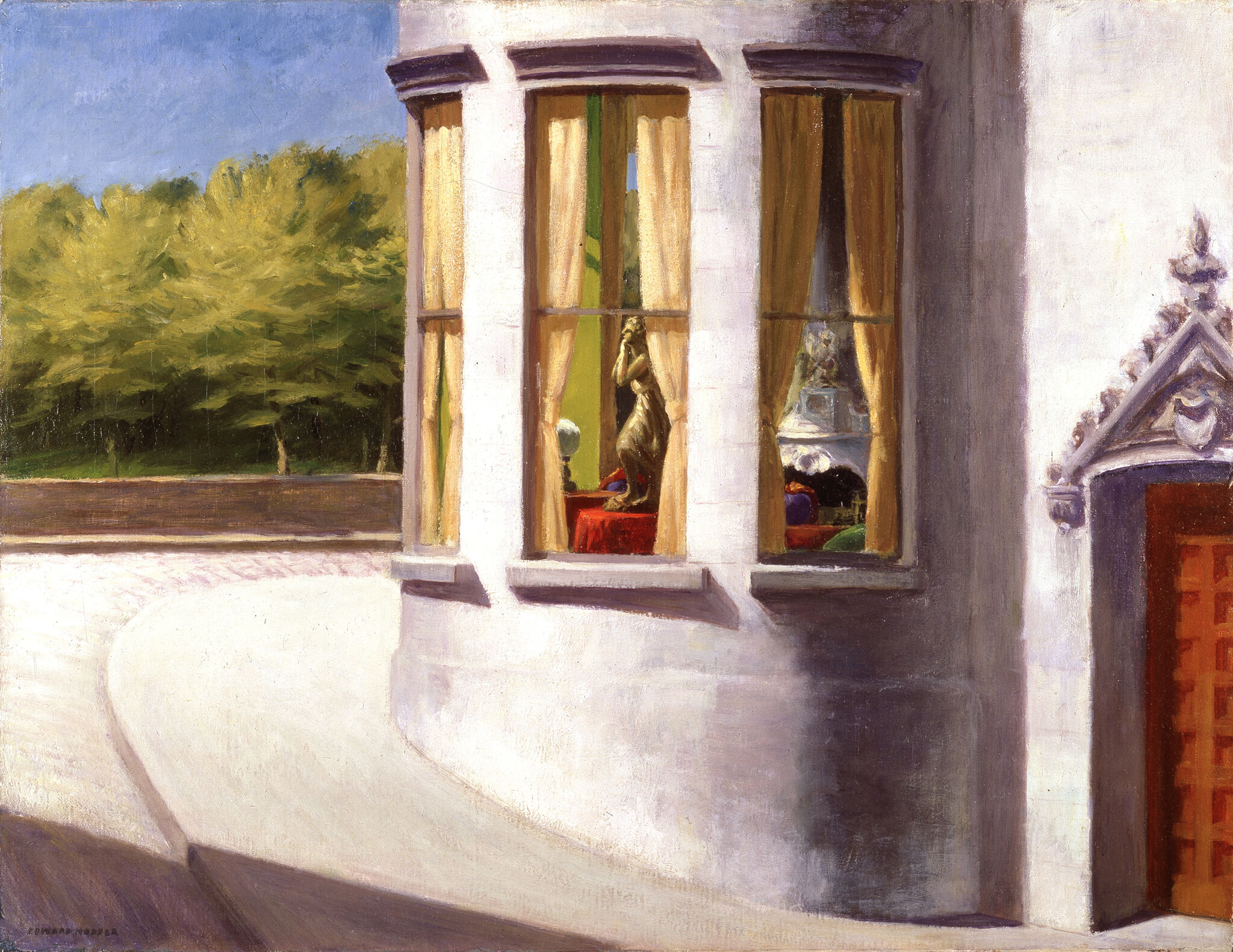Edward Hopper’s New York | Art & Artists
Oct 19, 2022–Mar 5, 2023
Edward Hopper’s New York | Art & Artists
Reality and Fantasy
6
In his personal journal “Notes on Painting” from around 1950, Hopper described his desire to create a “realistic art from which fantasy can grow.” At a time when many artists in New York had grown skeptical of figurative painting and aligned themselves with new modes of abstraction, Hopper’s depictions of cafeterias, theaters, offices, and apartment bedrooms occupied a potent middle ground, with their radically simplified geometry and uncanny, dreamlike settings.
In these ambitious late works, Hopper often incorporated solitary figures or small groups of individuals set in generic urban spaces that nonetheless capture particularities of the city’s built environment— a brownstone abutting a public park, a cafeteria overlooking another building’s facade, a neighbor’s window seen through one’s own. Through these scenes, New York served as a stage set or backdrop for Hopper’s explorations of what he described as the “vast and varied realm” of one’s inner life.

